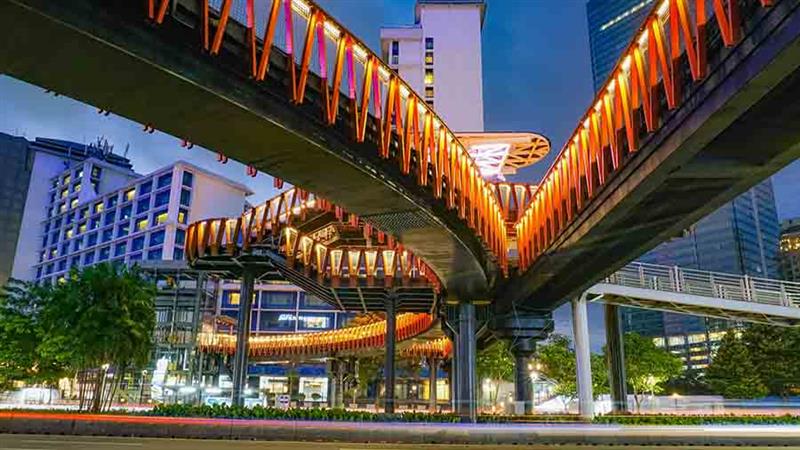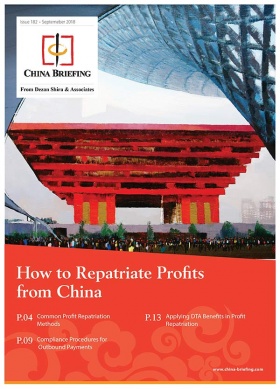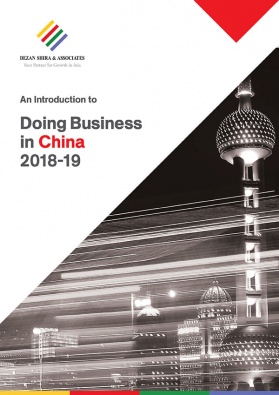The EU Commission’s “EU-Asia Connectivity Strategy” Omits China
The European Commission has just released a report “Connecting Europe and Asia – Building blocks for an EU Strategy” within which it lays out a basic framework for “a strategy on connecting Europe and Asia.” In the document are numerous passages highlighting the successes the EU has already had, and loosely describes future potential for dialogue with “Asian partners”. It also highlights the amount of trade the EU has with Asia, (without specifying what it means by “Asia”).
It states: “The relationship between the European Union and Asia is of global significance and the ties are likely to increase in the coming years. Asia, with roughly 60 percent of the world’s population accounts for 35 percent of the EU’s exports (€618bn) and 45 percent of the EU’s imports (€774bn)”. These are impressive figures, and begin with report with some promise, and especially for those countries in Asia, such as China, whose connectivity is important in future trade development. Global media has also commented on the report, commonly stating that it is the “EU’s answer to China’s Belt and Road.” Examples are here, here, and here.
However, on closer examination, the paper provides no suggestions on how the EU can truly connect with Asia. It only mentions China in the scope of air traffic safety and omits mention of the Belt and Road and connectivity with China altogether. In fact, the very title of the report “EU-Asia” is entirely misleading. It barely mentions Asia, doesn’t reference any of the pan-Asia institutions, such as ASEAN, the Shanghai Cooperation Organisation, or the Eurasian Economic Union. Russia, a key geographical landmass situated entirely between Europe and Asia, is only mentioned in terms of “dialogue” and not connectivity.
What are mentioned are the countries of the Western Balkans and Caucasus in terms of the EU sponsored Trans-European Network for Transport (TEN-T), which has recently been extended to include the ex-Soviet states of Armenia, Azerbaijan, Belarus, Georgia, Moldova, and the Ukraine, along with the Western Balkans, countries which are generally considered to include Albania, Bosnia and Herzegovina, Kosovo, Macedonia, Moldova, and Montenegro and Serbia.
Later in the document, the EU Commission mentions countries it wishes to have dialogue with in terms of EU-Asia connectivity. These are Afghanistan, India, Indonesia, Iran, Pakistan, Republic of Korea, Turkey, and countries of Central Asia, as well as Australia and the United States.” Central Asia is usually considered to include Kazakhstan, Kyrgyzstan, Tajikistan, Turkmenistan, and Uzbekistan.
As these are the only countries specifically mentioned in the report, Asia Briefing has helpfully drafted a map to illustrate the geographical extent of the EU-Asia Connectivity Strategy. It looks like this. (The EU nations are in dark blue and the countries the report actually refers to are in light blue).
As can be seen, the map appears to view the immediate regions of the West Balkans and Caucasus as Asia, while loosely extending a corridor through to Turkey, Iran, Pakistan, and India, then across to Indonesia and Australia. Northwards it heads from the Caucasus and includes the Central Asia states, stopping at Kazakhstan. It includes Russia, albeit not in any defined ‘connectivity’ sense. Curiously, although the report is about Asia connectivity, it also includes the United States, referring to them as an “Asian dialogue partner”.
It is hard to know what to make of these statements from the EU Commission. Most of the countries shown within the map are there as “dialogue partners” while the connectivity discussions focus exclusively on the Balkans and the Caucasus.
Then too, there is the financial aspect of the EU connectivity plan. In fact, the report notes that “Some estimate that Asia will require over €1.3 trillion a year of infrastructure investment in the coming decades to maintain today’s growth rates and to adapt to climate change. By comparison, in the EU, the investment in the Trans-European network for transport is estimated to require €1.5 trillion in the period 2021-2030.”
In short, the EU Commission sees that infrastructure in the EU itself has a larger financial need than Asia. This is how the basic premise of the report in terms of promoting the need for greater connectivity with Asia essentially fails. The implied argument that the EU only has money for its own infrastructure needs and not those of Asia is further clarified when they discuss financing of this “connectivity with Asia”, stating that it doesn’t intend to actually make any recommendations. “The Commission does not aim at establishing an investment plan, although the EU’s existing and future financial instruments could offer some perspectives for supporting private investment in connectivity-related projects.”
So, the Commission proposes achieving EU-Asian connectivity without any money. That’s novel. Instead, the Commission suggests raiding the public purse and targeting private investors: “The EU should strengthen cooperation with the EU Member States’ public and private finance institutions, including sovereign funds and strive towards a closer concentration of activities with them.”
This means that the EU Commission report is not, as has been widely reported, a response to China’s Belt and Road Initiative. In the BRI, China is prepared to finance projects. In the EU-Asia Connectivity Report, the EU is not prepared to finance any connectivity.
The lack of understanding of what Asia actually is as a landmass and China’s role within it and EU trade connectivity is startlingly inadequate. Referring to Russia and Turkey, major routes from the EU to Asia as “dialogue” partners, and omitting China from even that status shows off the report as a lot of hot air.
What is needed from the EU is a detailed report on how to better integrate the EU with Asia and improve connectivity through real projects and real infrastructure, and a working financial plan to get this done. What has been delivered is a half-baked idea that doesn’t reach China, the EU’s largest trade partner, and confesses it doesn’t have any money to spend on the concept anyway. That is not a connectivity strategy. It is an admission of failure. It fails EU businesses wanting to trade with Asia and it fails future EU exports that could be heading to Asia. The EU Commission need to go back to the drawing board on a report that offers neither tangible answers or strategy to “EU-Asia connectivity”.
About Us
Chris Devonshire-Ellis is the Chairman of Dezan Shira & Associates. His views do not expressly reflect that of the firm. Chris has had a 30 year career in Asia and is the head of the firm's Belt & Road Desk. Please visit our website at www.dezshira.com
- Previous Article Las ciudades de mayor crecimiento en China
- Next Article USMCA Trade Pact: What it Means for China, Key Stakeholders

























